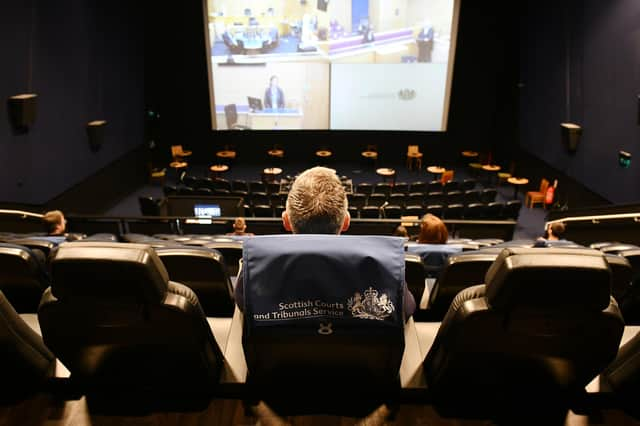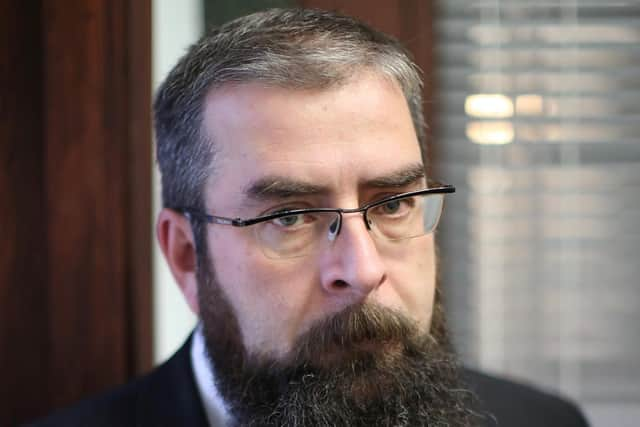Justice is still intact, but now it's on the big screen - Tony Lenehan


488 years is plenty for traditions to become time-hallowed.
Now we find ourselves in these Covid times conducting trials by streams of invisible electrons. Addressing juries who are miles away, safely distanced in cinemas, their faces beamed back to court onto banks of TV screens.
Our old wigs take time to adjust. The pandemic brought our system of jury trials to a shuddering halt in March. Trials set down from then on, no doubt eagerly awaited by all concerned, were abandoned and stacked back in a waiting formation.


Advertisement
Hide AdAdvertisement
Hide AdEvery day of every week poured new cases into a reservoir that had no outlet. Plenty were concerned about the risk of bursting banks and the sense of urgency was acute. A working group was formed, headed by the Lord Justice Clerk, Lady Dorrian. The inertia that might haunt the heavy machinery of our justice system was swept aside and, with a committed Parliament and Government, jury trials, the very foundation of justice in a civilised society, burst back into life in the sombre High Courts in Glasgow and Edinburgh in July.
By a skilled process of refinement, those charged with the delivery of the resumption of jury trials harnessed the resources of the digital age into a safe, workable system, now spreading across the land, High Court and Sheriff Court alike.
The architecture of our courtrooms had pre-Covid juries sitting together as if at a lecture or in a theatre. In normal times, that system worked well and had for centuries, but if that had been brought back during Covid, symptoms in one juror would mean disaster for all. Moving the jury to spaces large enough to keep the safe social distances was the answer. Cinema theatres offer that.
What happens now is that the lawyers and court personnel conduct the trial in court largely as they always did. Wigged and gowned. We sit further apart. We wear masks when moving about. We smell of hand-gel.
The witnesses come to court and take the oath, and tell of their experiences and knowledge as they always did. The route they tread to and from the witness box is cleaned before and after them.
The jurors watch it all on the big screen. They have access to video feeds from cameras around the court, and view the guns and knives and documents of our business from a camera projector, beamed onto a quadrant of their view.
Honestly, to this point the new safe way of jury trials feels and works just like the old.
When the evidence is all before the jury, the lawyers stand facing a camera as you’ve seen our politicians do. We see the jury’s faces stacked in four rows on screens where their predecessors would have sat and, Deo volente, will again soon. They see us 15ft high in splendid Technicolor. Our words travel through the same wires as Leonardo DiCaprio’s.
Advertisement
Hide AdAdvertisement
Hide AdWhat we can’t pretend is that relying on those beams of electrons to touch the sense and sensitivities of the 15 jurors is the same as it was when we stood four feet from them.
The intimacy of the old courtroom scene allowed you to measure and react to the attention and interest of your audience, using visual cues to work with their varying involvement and draw the reluctant and uninterested back to the task in hand.
If the cutting edge of communication seems slightly dulled, then both the swords of the Crown and defence feel it equally, so no unfairness results.
Five centuries ago, our horsehair wigs were a consequence of endemic headlice, leaving all civilised heads shaved bald for health and hygiene. Now, 500 years later, another public health crisis engulfs our system of justice, but ingenuity and industry will see us through, justice intact.
Tony Lenehan is Vice-President of the Scottish Criminal Bar Association, the criminal division of the Faculty of Advocates